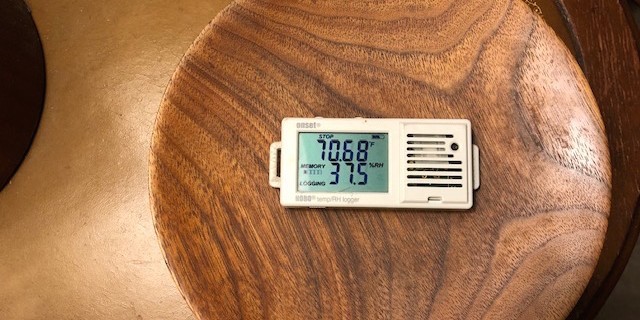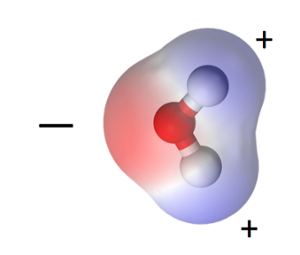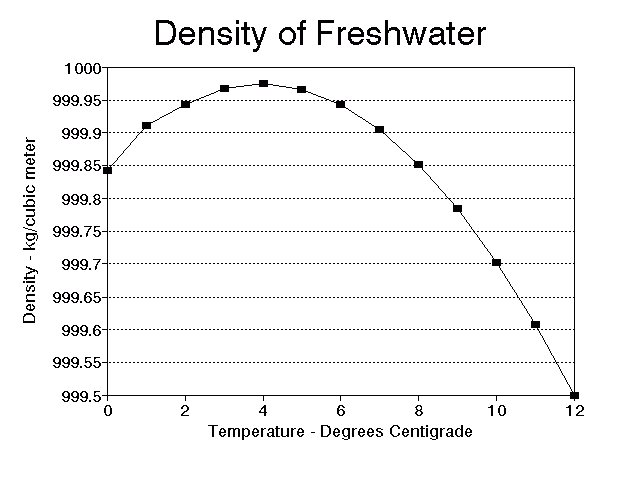by Allison Bailes —

I’m going to go out on a limb and make what you may think is an outrageous statement: Water is the most interesting substance in the world. Some of you may immediately respond, “Oh, yeah! What about beer?” (Or wine or Sidecars, Negronis, or Sazeracs or whatever your drink of choice is.) Without water, we wouldn’t have those drinks.
But what else makes water so interesting? Well, let me name a few. The water molecule is polar, which makes for lots of interesting properties.

When liquid water becomes a solid, it does the opposite of most other materials making that phase change: It becomes larger! And did you know that liquid water reaches its highest density at 4 °C (39 °F), not 0 °C (32 °F)? That’s right. It starts expanding even before it freezes.

That fascinating property ensures that fish don’t freeze into a block of ice in winter because as the air above chills the water in a lake or pond, the water becomes denser and sinks…until it reaches 4 °C. As the temperature goes below 4 °C, the water becomes less dense and sits on top of the denser water. And that’s why lakes freeze from the top down instead of the bottom up, sparing all the fish in the process.
But you’re here to find out about water in its vapor form so let’s get to that now.
Reasons your home’s indoor humidity is too low in winter
Another amazing property of water is that it can change among all three phases at the temperatures and pressures we spend our lives in. Oxygen doesn’t do that. Carbon dioxide doesn’t do that. Ethanol doesn’t do that. But water regularly passes from liquid to vapor and vapor to liquid in your home. It makes humidity control tricky, of course, but it also makes our lives more interesting.
Anyway, if the relative humidity in your home is too low in winter, the overriding reason that happens is:
You’re bringing in too much outdoor air!
But how does that happen? The first thing to know is that cold air is dry air. Water loves to change phase and when the temperature drops, those little water molecules love to cling to other things and to each other, becoming liquid or solid (or adsorbed, a kind of fourth state).
- Infiltration. Your house is too leaky. Seal the leaks.
- Duct leakage. This one’s similar to the other except your furnace or other type of forced-air heating system is either directly bringing in outdoor air through leakage on the return side or indirectly bringing it in through changing the pressure in the house.
- Mechanical ventilation. With building codes requiring airtightness these days, many homes now have whole-house mechanical ventilation systems. If you bring in a lot of outdoor air and don’t run it through a device like an energy recovery ventilator (ERV) that preserves some of your indoor humidity, you can end up drying out the house.
- You were raised in a barn. At least that’s how my parents put it to me when I left doors open.
Solving the low humidity problem
The solutions to low humidity are pretty obvious. Cold air is dry air so limit the amount of cold air you bring in and you won’t dry out the indoor air so much. But what do you do during the Polar Vortex? Or if you live in a place where it’s super cold every year?
Well, you could cook a lot of spaghetti and take a lot of steam baths or put in a humidifier to raise the humidity level in your home. You also can not turn on the bath fan when you take a shower. You need to be careful with those things, though, because remember, those water vapor molecules will look for ways to get out of the vapor phase when it’s cold. If you have cold enough walls or windows or other surfaces and you add too much humidity, you’ll get condensation.
It’s a delicate balance you’re trying to achieve. You want the Goldilocks humidity level: not too low and not too high. You want it just right.
Generally, the colder it is outside and the worse your home’s level of insulation and air-sealing is, the lower the humidity your home can tolerate. You might have to be happy with 30% relative humidity, maybe even a bit lower. If you live in a Passive House, however, you can probably keep the humidity up near 50% and not even see condensation on your triple-pane, high-performance windows.

Another option is to get outside and enjoy water in its frozen form!
Related Articles
What Is the Best Indoor Relative Humidity in Winter?
Two Rules for Preventing Humidity Damage
A Humidifier Is a Band-Aid — The Problem Is Infiltration
The post Controlling the Humidity in Your Home in Winter appeared first on Healthy Indoors.






















